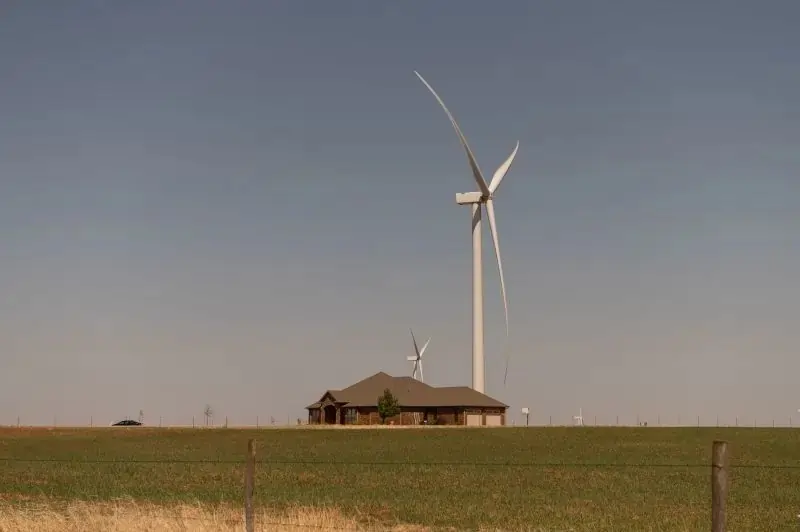As Wind Energy (Wind Turbines) proliferates across the United States, concerns have emerged regarding the potential impact of towering turbines on property values. However, a groundbreaking nationwide study, drawing upon a vast dataset of 300 million home sales and 60,000 wind turbines, unveils surprising revelations about the true influence of wind turbines on residential property values.
Table of Contents
The Study’s Findings on Wind Turbines and Home Values
Contrary to prior assumptions, the study reveals that the negative impact of wind turbines on home values is significantly lower than previously believed, averaging only a 1% decrease for homes within six miles of at least one turbine. Moreover, the study indicates that the closer a home is to a turbine, the more pronounced the effect, with properties within five miles experiencing the greatest decrease in value. However, this impact diminishes over time, with property values rebounding within a decade.

Methodology
The study employed a sophisticated mapping database to meticulously analyze the distance between homes and wind turbines, accounting for various factors such as topography. By assessing whether a turbine was visible from a home and quantifying the resultant changes in property value compared to similar residences without a visible turbine, researchers obtained nuanced insights into the relationship between wind turbines and home values.
Perception vs. Reality
One notable aspect of the study is its exploration of how wind turbines are perceived by the human eye. Despite their imposing stature, the study reveals that from a distance of five miles, a wind turbine appears no larger than an aspirin tablet held at arm’s length. This insight challenges common misconceptions about the visual impact of wind turbines on the landscape.
Temporal Trends
A fascinating discovery of the study is the temporal evolution of wind turbine perceptions. While early installations in the late 1990s contributed to declines in property values, recent data suggests a diminishing effect, with negligible impacts observed closer to 2020. This trend underscores the possibility of societal adaptation and acceptance of wind turbines over time.
Implications for Stakeholders
The study’s findings hold significant implications for both homeowners and farmers leasing land for wind turbine installations. By providing valuable insights into the trade-off between lease payments and potential declines in property values, the data empowers stakeholders to make informed decisions regarding wind energy development.
Conclusion
In essence, the study illuminates a nuanced understanding of the relationship between wind turbines and home values. As perceptions evolve and communities acclimate to the presence of wind energy infrastructure, the once contentious issue of visual blight may gradually fade into the background, much like other forms of essential infrastructure.


